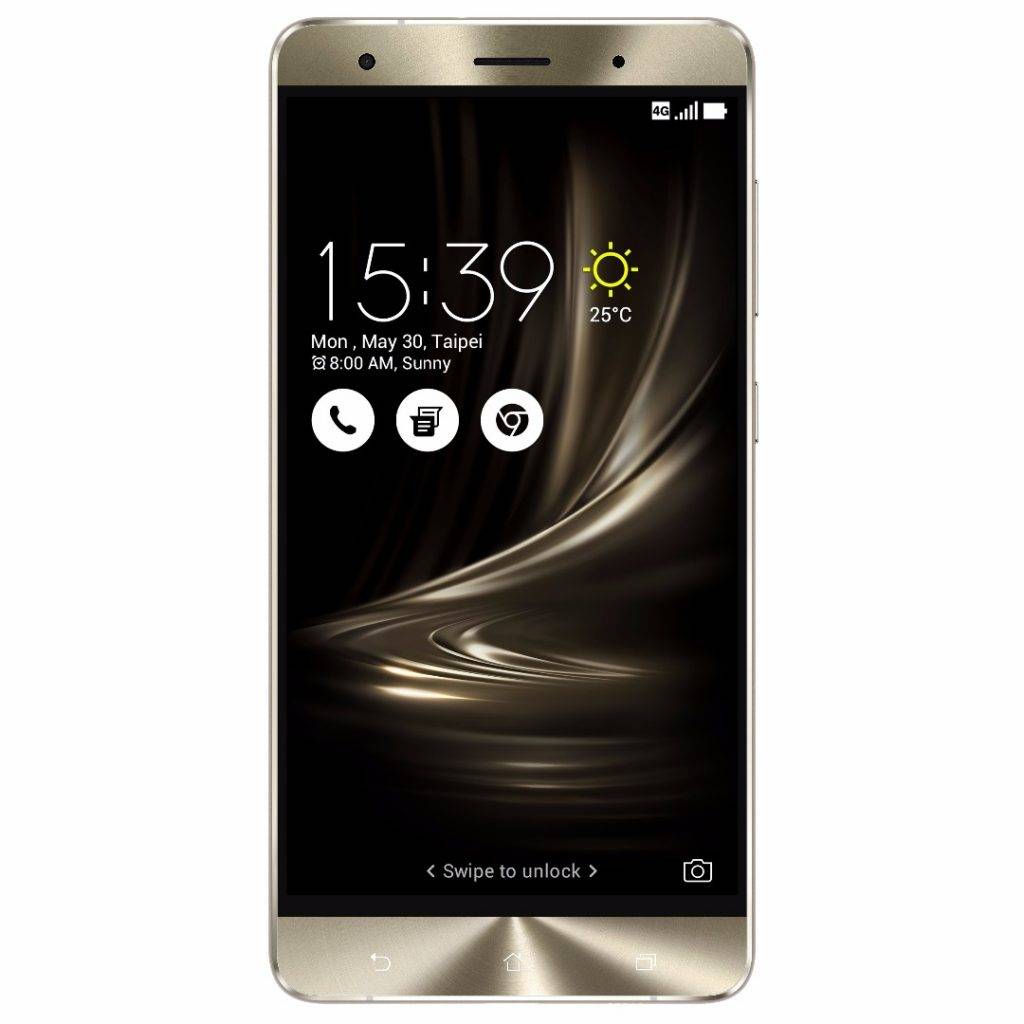
A lot of Asian manufacturers are making big challenges to the big boys of the smartphone industry, getting people to see that flagship specs don’t necessarily mean prohibitive price points. The established order of Samsung, Apple, LG and Sony has recently been challenged by smaller names like OnePlus, Xiaomi and Huawei, as they put out sub-$500 flagship phones that can run with the best flagships out there. This year, ASUS is also bringing its “A-game” to the fight at the top with the newly launched ASUS ZenFone 3, and you better get ready because it’s a beauty.
At the Computex 2016 trade show in Taiwan, ASUS was not about to let home market advantage go to waste and all eyes were on them as they brought out three new smartphones for its flagship line this year – the ZenFone 3, the ZenFone 3 Deluxe, and the ZenFone 3 Ultra. As expected, these new phones share a common aesthetic language, but you will really do a double take on the base model with its gorgeous 2.5D Gorilla Glass on both front and back of the metal finish. Let’s get to the meat of these new models.

The ASUS ZenFone 3 basic variant is not at all boring as you expect it to be. Aside from the gorgeous looks, it will be the first to carry the Snapdragon 625 midrange chipset, made from the smaller and more efficient 14nm process of Qualcomm as they let go of their partnership with Intel. The processor features eight Cortex-A53 cores maxing out at 2GHz, and this will be supported by an ample 3GB RAM and 32GB internal storage. Those will be powering a 5.5-inch FullHD (1080p) IPS LCD display. You also get Cat 6 LTE with the chipset, dual-SIM support (one Micro SIM and one Nano SIM), 802.11ac MU-MIMO WiFi, Bluetooth 4.2, all powered by a 3,000mAh battery. You can also choose to use microSD expansion if you eschew the nano SIM slot.
Cameras will also be one of the highlights of this line, ASUS has gone and used Sony’s highly capable 16MP IMX298 sensor, the same one on the Xiaomi Mi 5 and the Huawei Mate 8. The speaker at the bottom has been upgraded, and you get a “5-magnet” driver, an NXP smart amp certified for Hi-Res Audio headphone output. ASUS has also gone to ride the USB Type-C bandwagon (2.0), first time for the ZenFone line. Another welcome addition is the new fingerprint sensor on the back. And you wouldn’t have guessed that all this will be priced at USD$249.

The ASUS ZenFone 3 Deluxe will carry the most robust specs of the line, although it carries a similar look to the base unit. The difference is that it uses a curved metal finish at the back instead of 2.5D glass. Front and center is a larger 5.7-inch 1080p Super AMOLED display powered by the top of the line Snapdragon 820 chipset and a whopping 6GB RAM. The camera is also better on this variant, this being the first smartphone to use Sony’s new IMX318 sensor – which will give you a super resolution mode that gives 92 megapixel images.
ASUS pulled no stops here – you get Cat 13 LTE with tri-band carrier aggregation (150 Mbps uplink), speedy USB 3.0 data connection (still Type-C), and Qualcomm’s Quick Charge 3.0. Priced at a still very affordable USD$499, you will get 64GB of internal storage, but ASUS announced that a 256GB variant will be coming out soon.

The big daddy of the three is the ASUS ZenFone 3 Ultra. No prizes for guessing that this is a large screen variant, it practically announces that fact by itself. This is a phablet-sized device, featuring a large 6.8-inch FullHD (1080p) LCD screen powered by an octa-core Snapdragon 652, slightly more powerful than the ZenFone 3 base variant but still midrange enough to keep the price point down. At USD$479, you get 4GB RAM, 64 GB internal storage, Cat 6 LTE, 802.11ac WiFi and Quick Charge 3.0. The cameras on this hulk of a phone are identical to those on the ZenFone 3 Deluxe, but the fingerprint reader has been moved from the back to front, below the screen. It’s really a good balance of specs and pricing – but you have to be ready to carry around a monstrous phone.
https://www.youtube.com/watch?v=RJAggN4sVXM
No release dates on these babies yet, but you can be sure we will be keeping our ears to the ground. Something tells us ASUS maybe onto something here. They may just be improving on the strategies of all these new Asian players, but we feel they have taken the fight right to the hilt, and the delicate balance between specs and pricing feels very close to perfect.
SOURCE: ASUS









